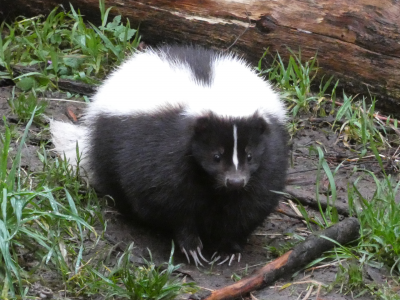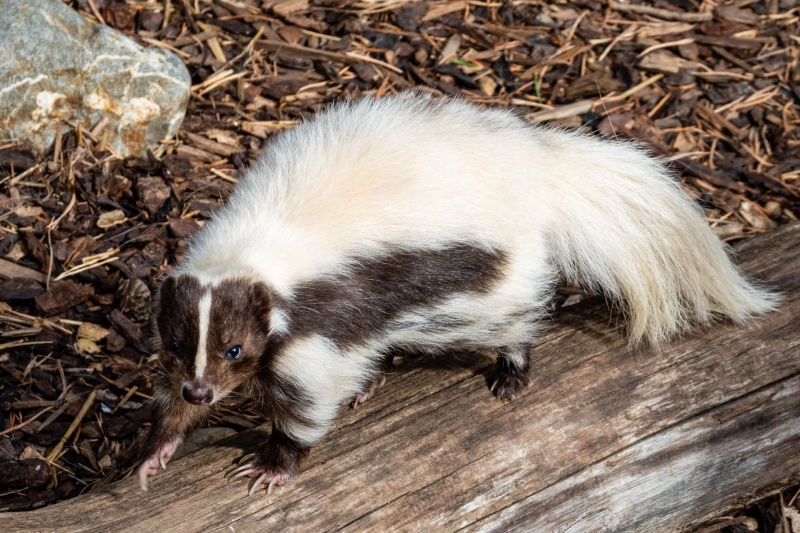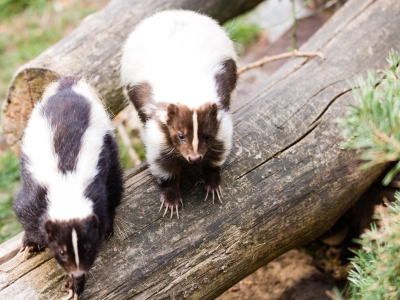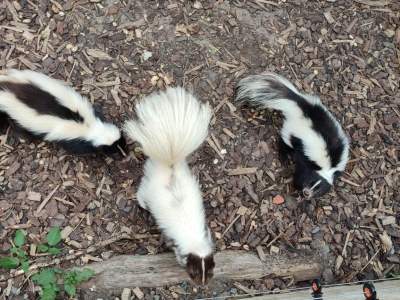Striped skunk Mephitis mephitis
Animals in our sanctuary
Gerta

Gerta was found in a private garage. She probably escaped somewhere, but her previous owner did not search for her. Because of this her history and age are unknown. Fortunately, she was able to come to us via SOS Wilde Dieren Geraardsbergen and can now enjoy a peaceful life together with the other skunks.
Where does he feel most at home?
The striped skunk likes to live in the deserts, forests, prairies and grass plains of North America.
What's his favourite food?
He eats mice, eggs, insects, berries and bait.
Fun fact
The striped skunk can spray a yellow, oily stinking liquid up to 6 m far. Impulsive movements and noise can also cause a skunk to spray.
Adopt this Striped skunk






